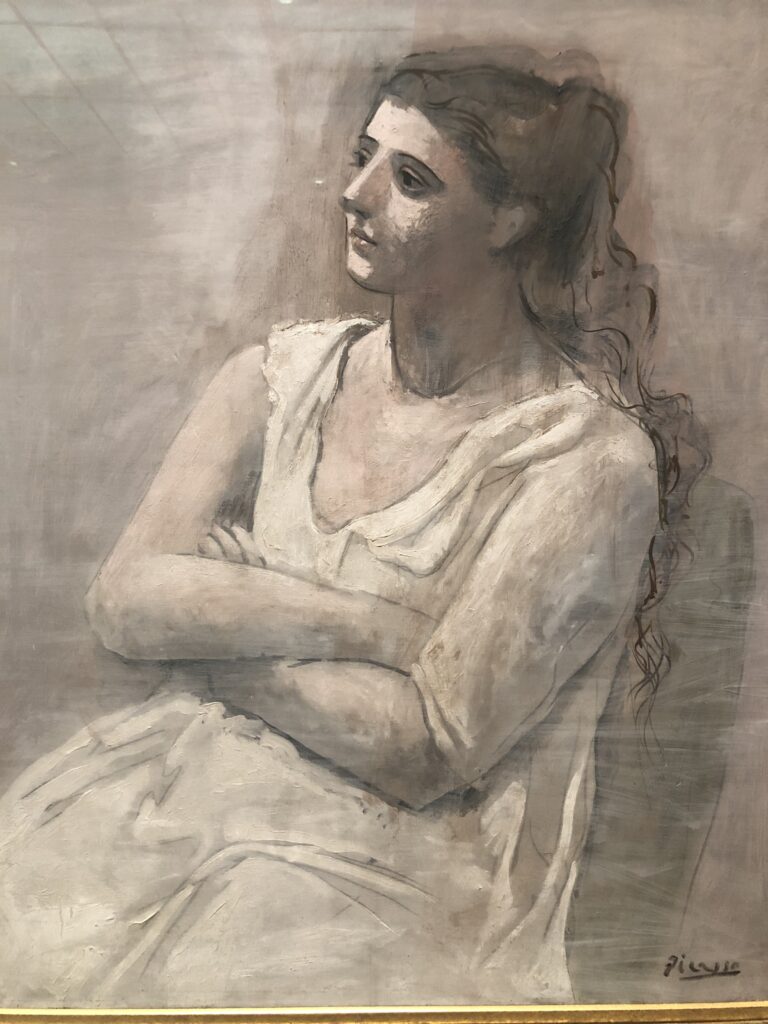Incomprehensible beauty

Woman in White, Picasso, oil on canvas, 1923
If you can say what beauty means, then you’ll be able to explain what any great painting means. But, as Iris Murdoch observed, the more clearly you see beauty, or truth, or goodness, the more mysterious it becomes, the more inaccessible to the easy manipulations of reasoning–and the more it becomes something you serve rather than understand and control.
The reactionary, neoclassical work Picasso did after the cataclysm of World War I represents his greatest and most heartfelt struggle to capture what drove him to paint again and again: the beauty and allure of women. He expressed this in so many ways, some far more impressive in hindsight than others. In the neoclassical work, his only showmanship was in easy ability to convey profound gratitude through a series of edges drawn with brilliant, childlike simplicity and proportion. I came upon this example during my visit to the Metropolitan Museum of Art recently. Every time I see work like this from the past, I feel I’ve never really fully appreciated it until now, which is exactly how I felt when I saw another example of this period and style from Picasso at my last visit to LACMA . In such a delicate image, I am always surprised, up close, to see how rough he could be in the way he applied the paint, applying it more like joint compound or spackle, smeared, scraped, and generally handled with expedience and no regard whatsoever for how the marks will look up close. Velasquez and Sargent would weep at his heedlessness, and I almost did as well, but not in disappointment. Picasso’s gift was nearly unique, a line as rare as Ingres, but there’s so much more heart here, so much more of a surrender to the essential mystery of what he’s yearning to show you. Beauty like this silences you on the spot, this post notwithstanding.
Anyone who wants to understand Picasso’s comment, sent along to me months ago by Bill Santelli, about the meaning of painting has only to look at Woman in White to understand that a great painting can be utterly meaningless and also the embodiment of everything you most need to see:
Everyone wants to understand painting. Why not try to understand the songs of a bird? Why does one love the night, flowers, everything around one, without trying to understand them? But in the case of painting people have to understand.
From Christian Zervos, “Conversation avec Picasso” in Cahiers d’art, 7/10, Paris, 1935, p. 178
Comments are currently closed.